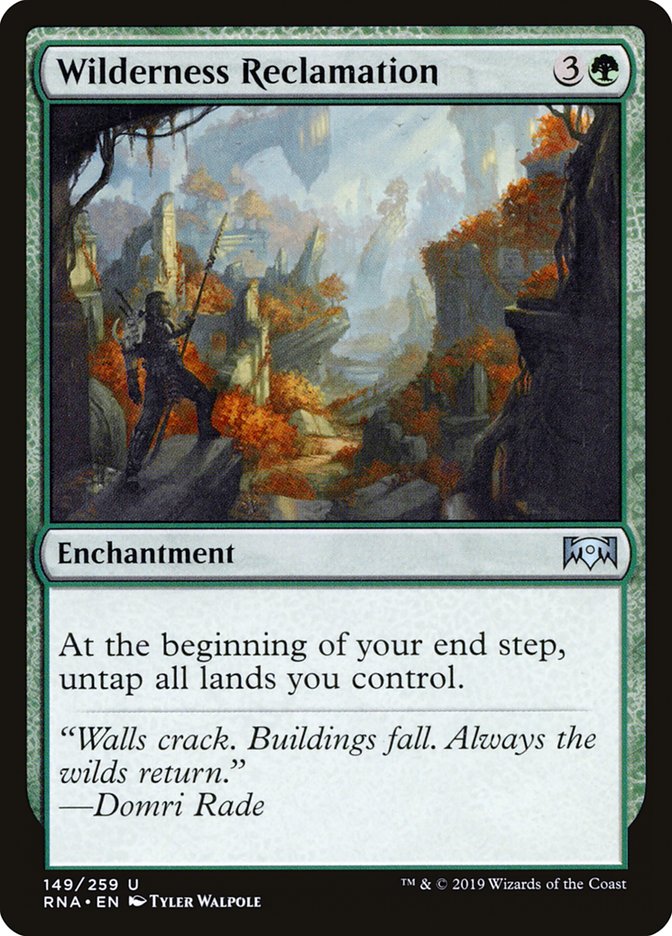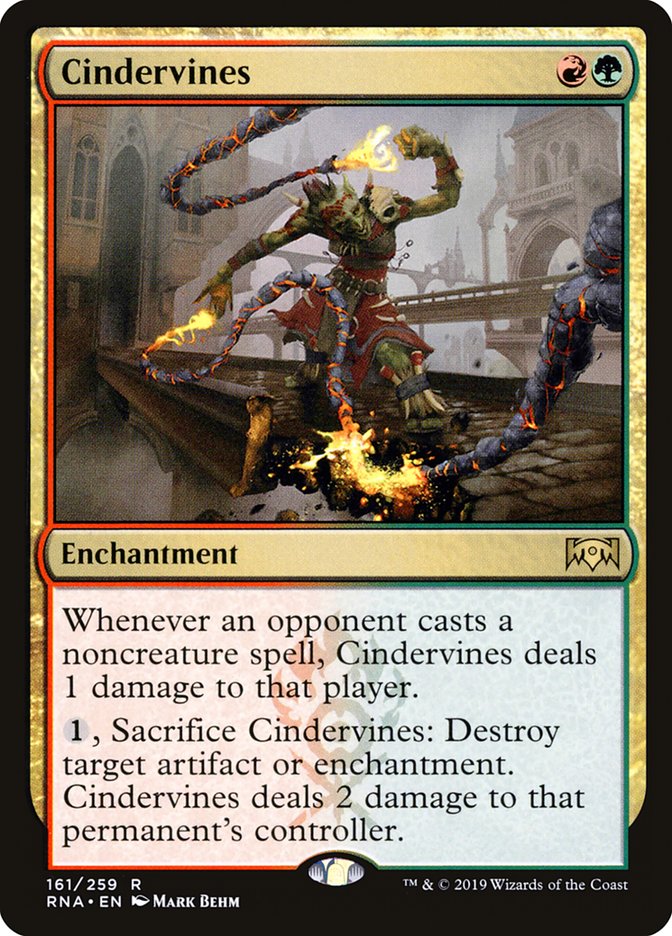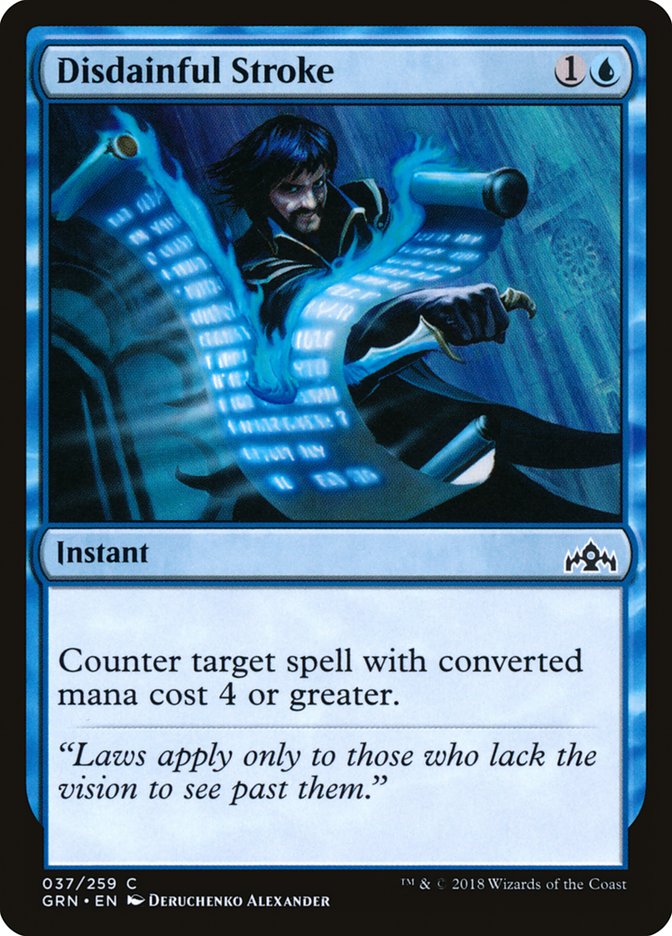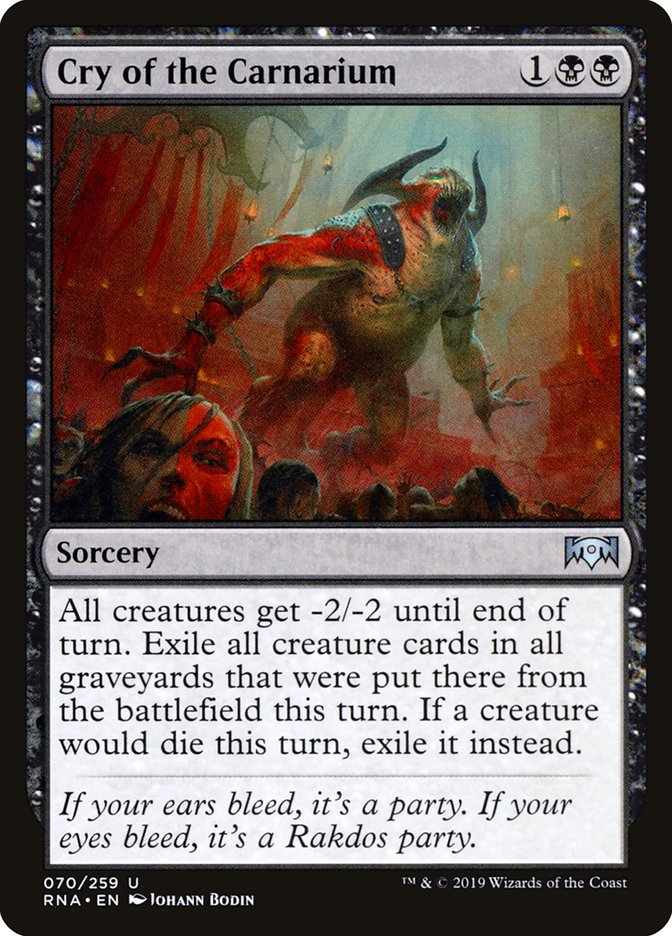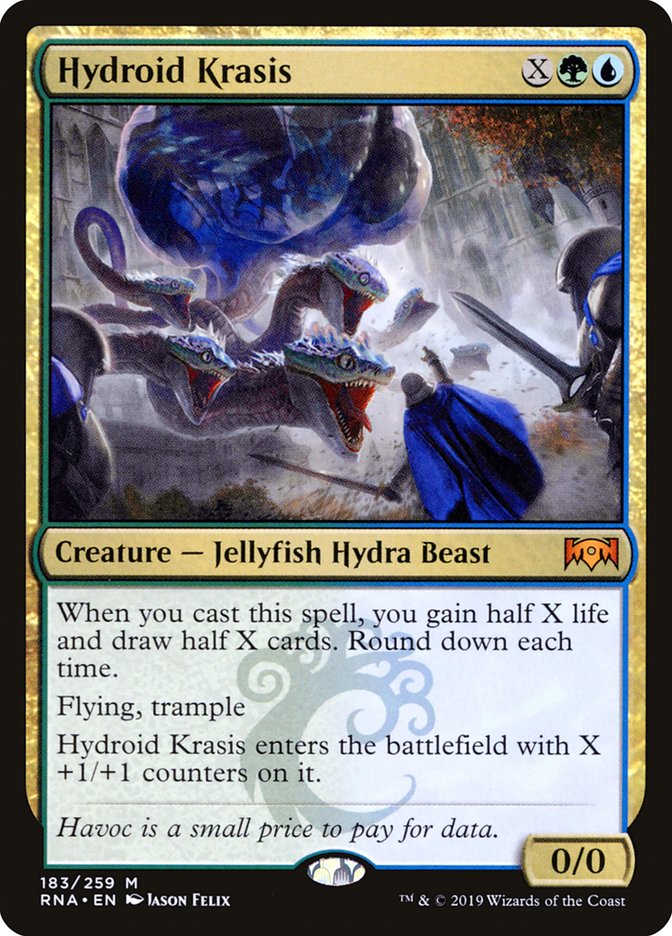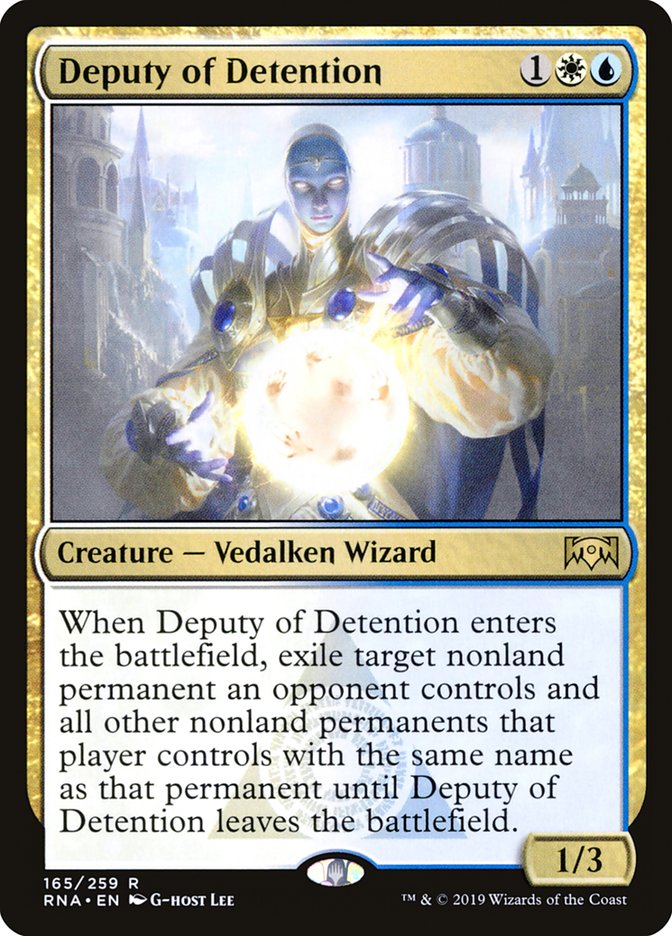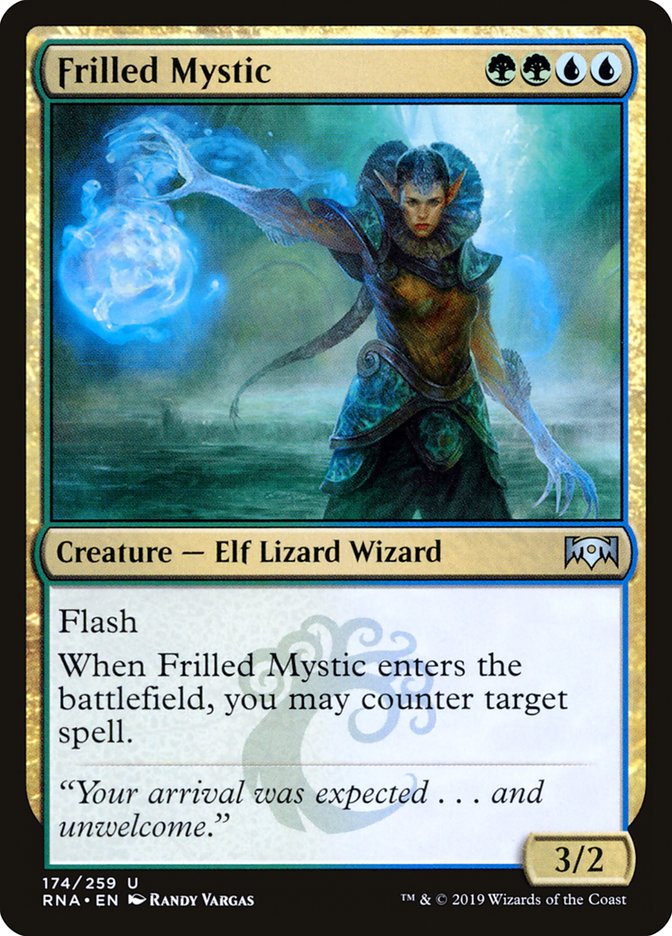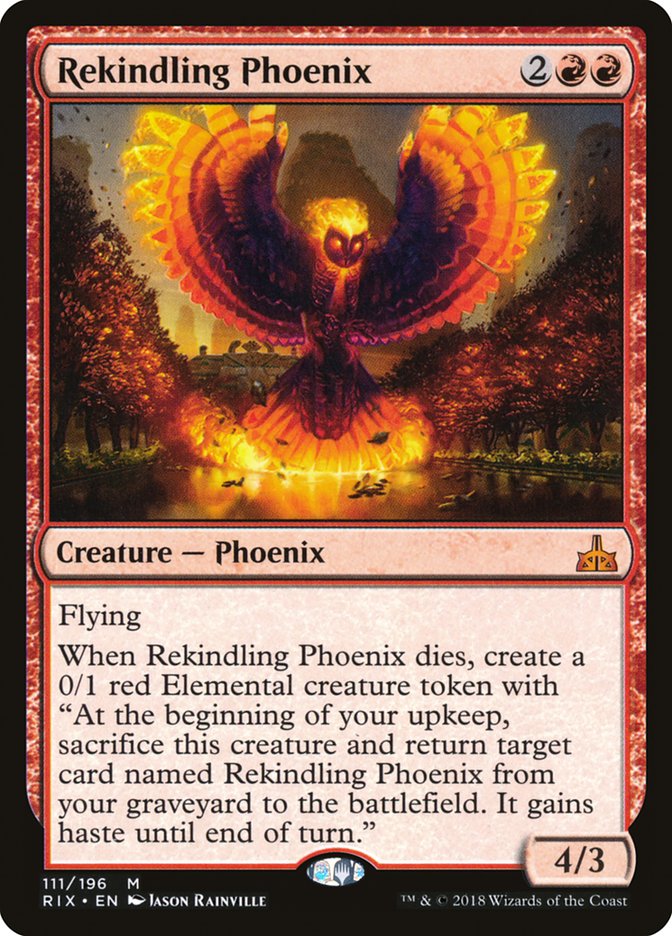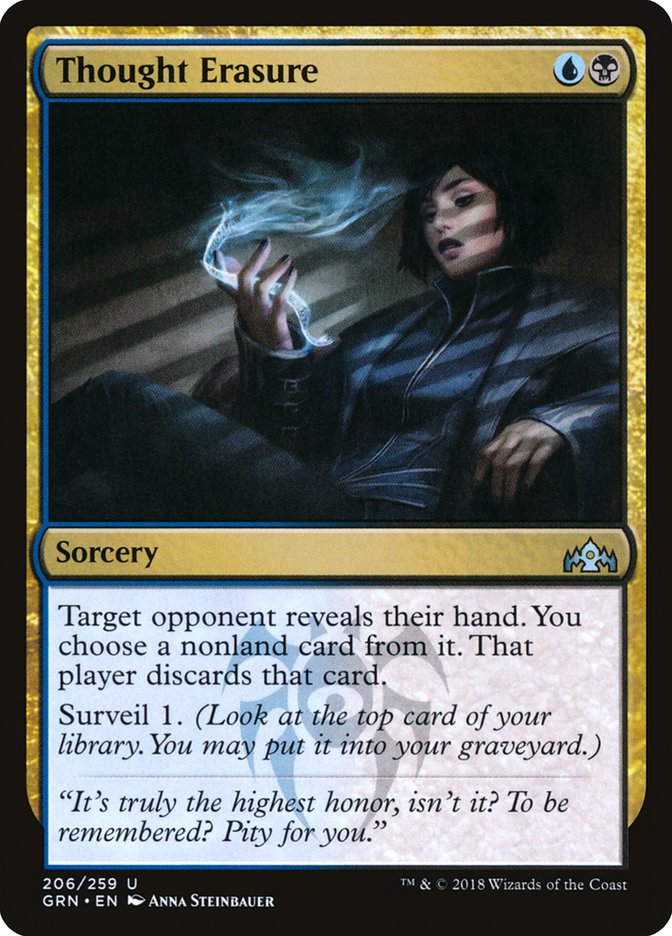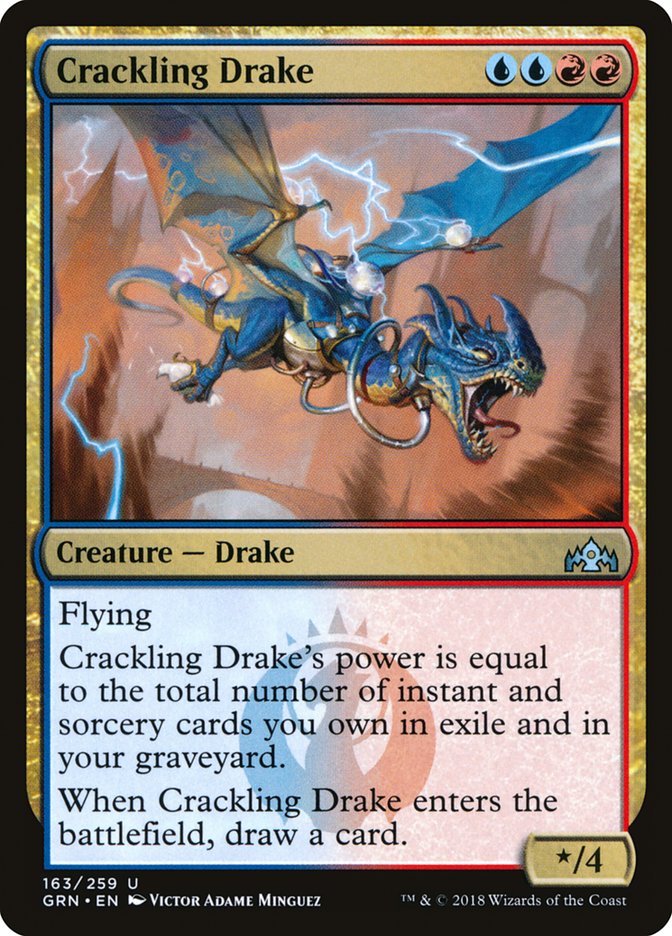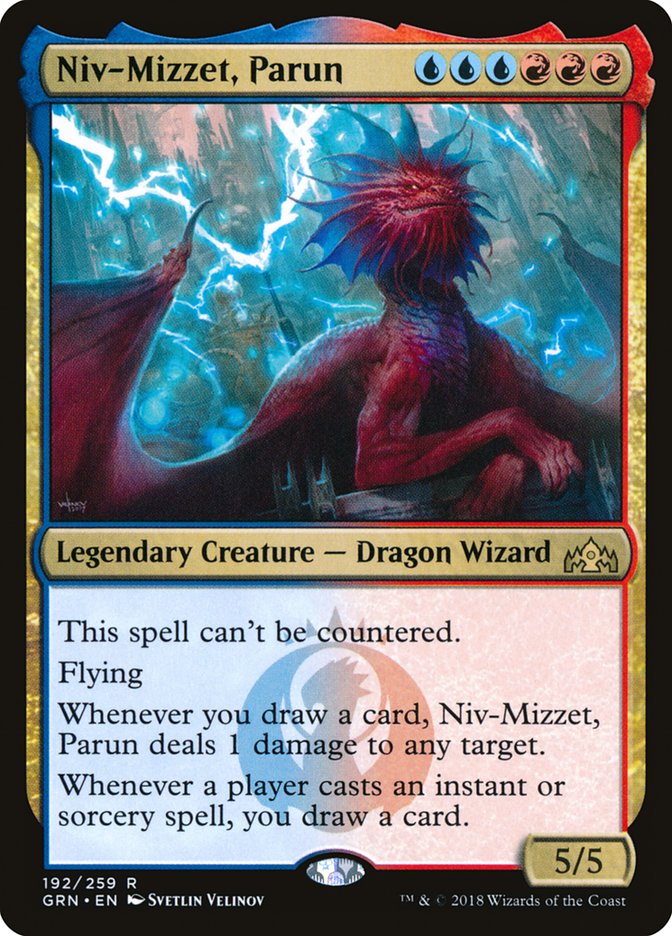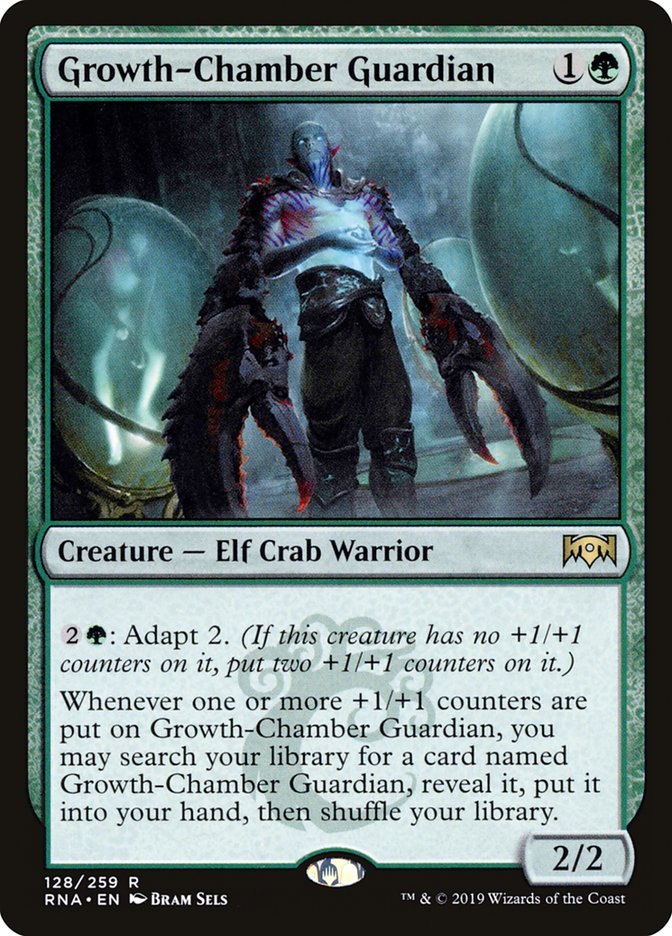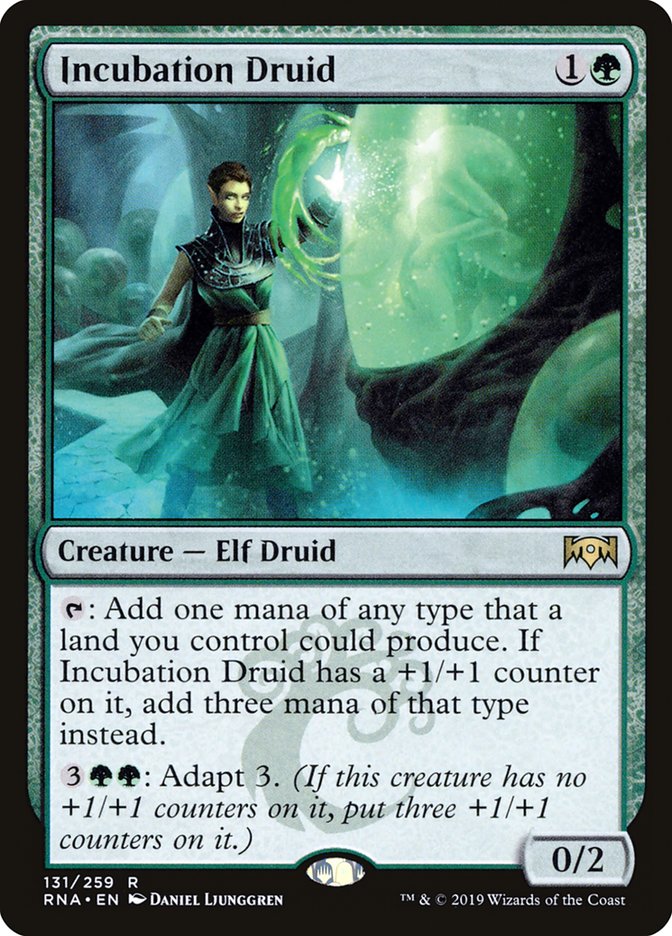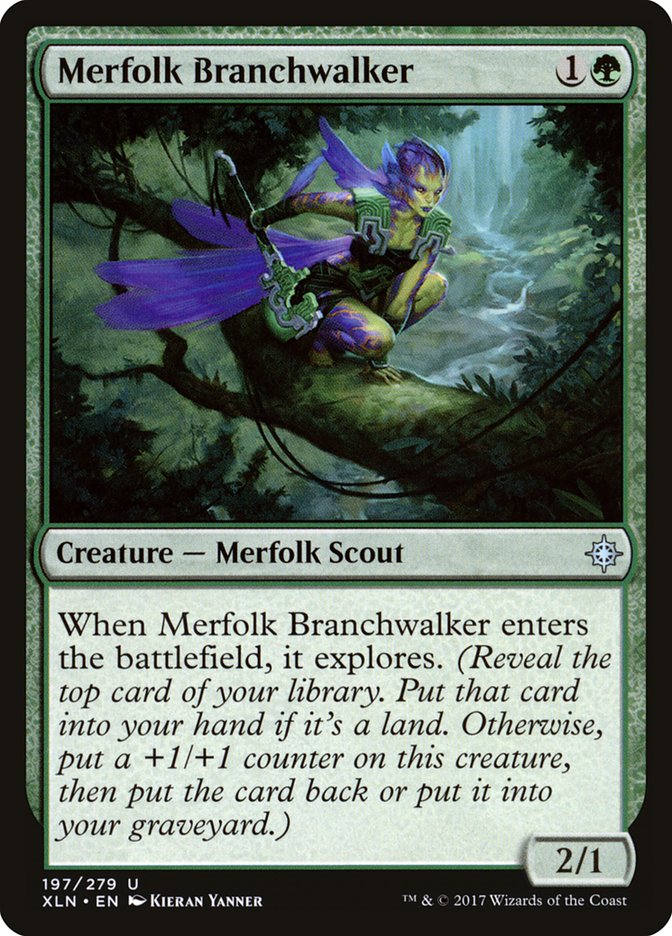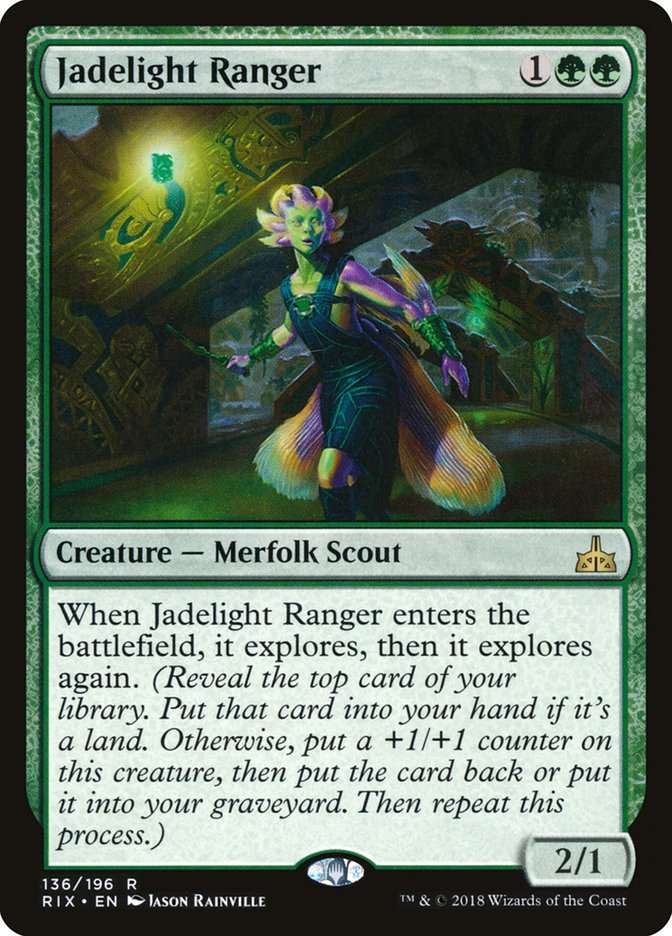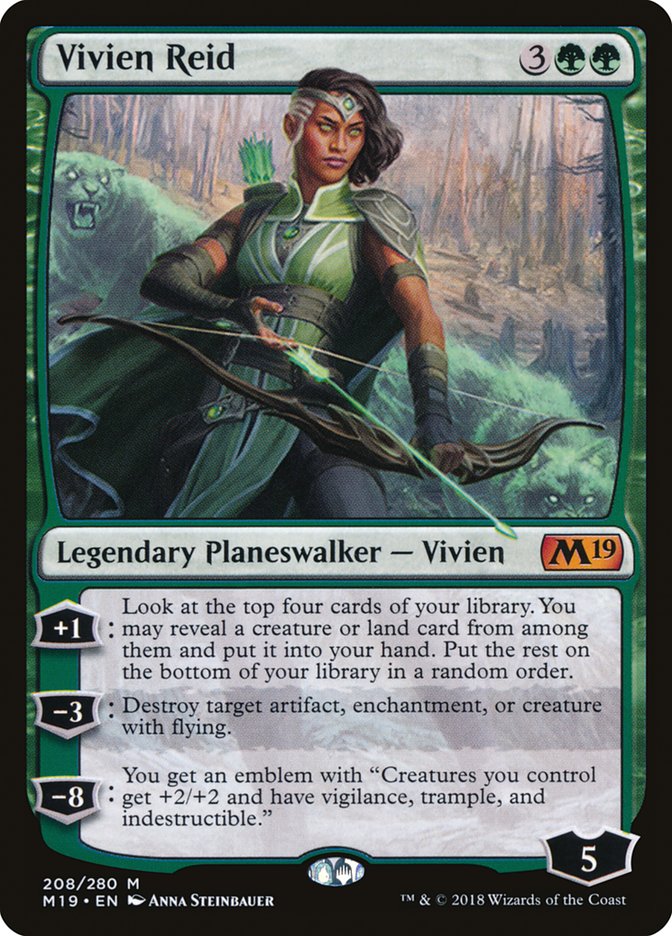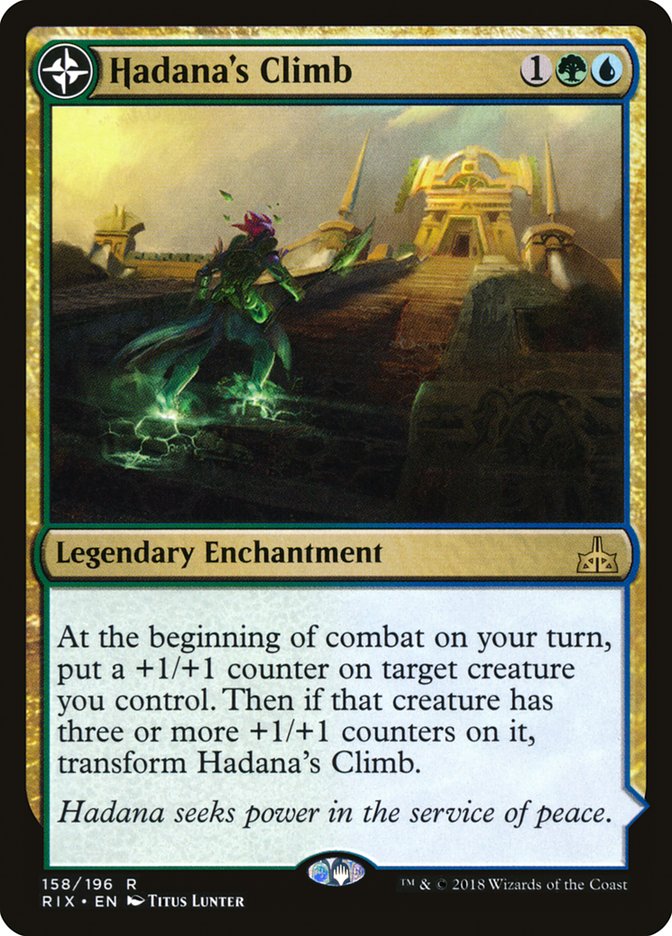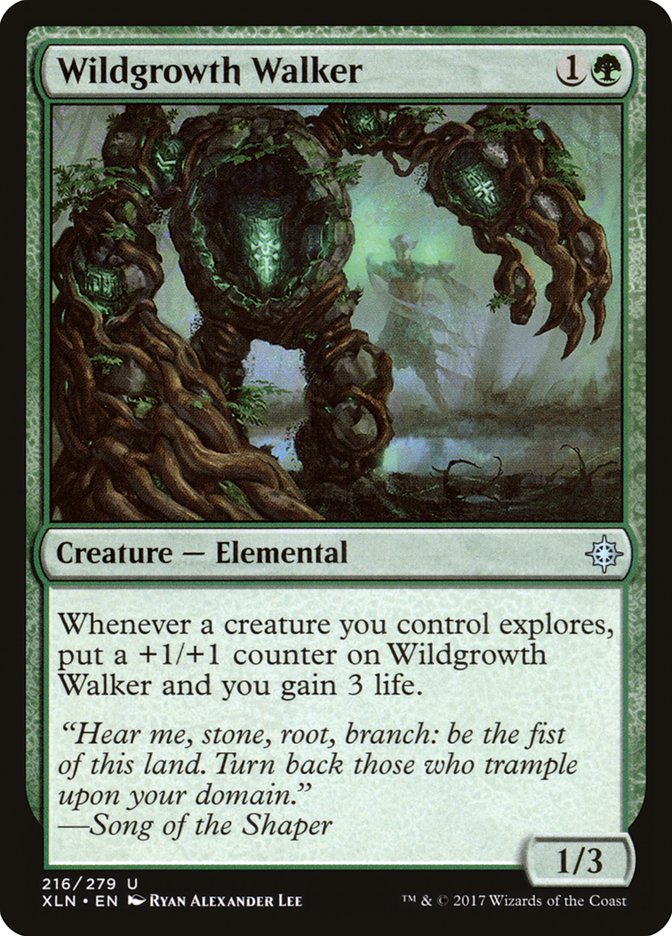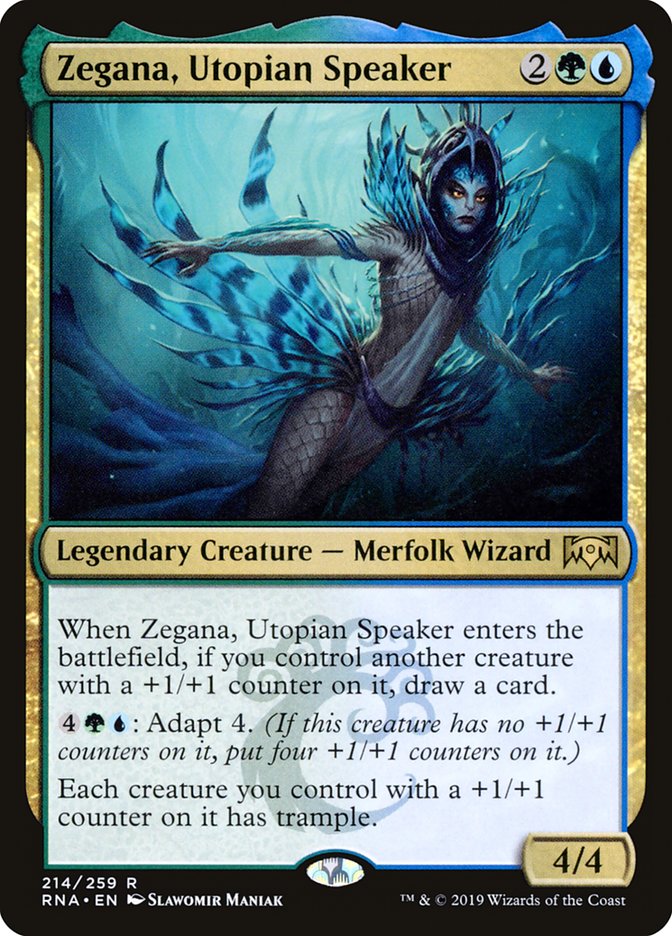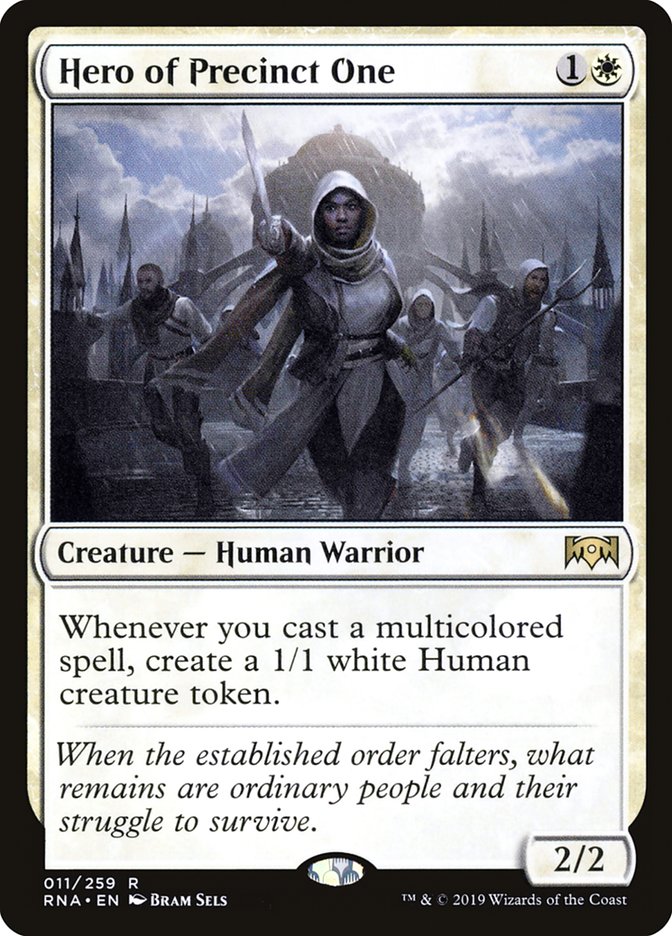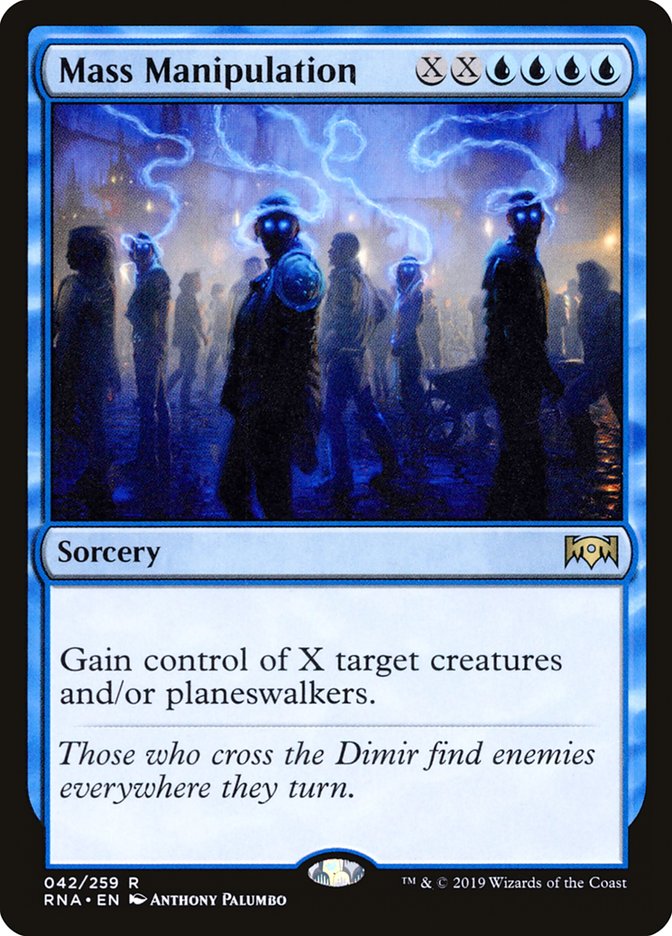A full 68 decklists from the #SCGINDY Standard Open. Sixteen more from the Standard Classic, and a Magic Online MCQ to boot.
That’s a lot of info to work with. I’ll let other people crunch the numbers; my job is to derive trends.
What is happening in Ravnica Allegiance Standard? What has been set up on large and small scales to start things off?
Three-Color Decks Win Again
Three-color decks crushed the format. Six of the #SCGINDY Top 8 played three colors, and eleven of the Top 16. The only decks that weren’t in this range were playing a triple-costed Dominaria card, loading up on Guildgates, or were random decks from a month ago people forgot to add anything to.
I’m right. Some other people are wrong.
Blue Is Just the Best
Over 75% of the #SCGINDY Day 2 metagame played blue. Over 80% of the Top 16 played blue. Fully 100% of the Top 8 played blue, and 100% of the Standard Classic Top 8 also played blue.
Blue is really good.
Planeswalkers (3)
Lands (25)
Spells (32)
- 4 Gift of Paradise
- 3 Search for Azcanta
- 2 Revitalize
- 4 Nexus of Fate
- 4 Root Snare
- 4 Chemister's Insight
- 2 Expansion
- 4 Growth Spiral
- 1 Precognitive Perception
- 4 Wilderness Reclamation
Sideboard

Nexus of Fate is the reason, but not because it did well. In fact, the best-finishing Nexus of Fate deck barely made the top half of Day 2 in 33rd place.
While Teferi, Hero of Dominaria and Wilderness Reclamation are technically permanents, the ways to deal with them as such are prohibitively expensive. Both can kill you immediately if they resolve, so answers have to be instant-speed. Leaving up Mortify or Vraska’s Contempt doesn’t mesh with also casting spells to kill them, Assassin’s Trophy just turns their big mana into other mana, you can’t cover both cards with just a single Thrashing Brontodon or Sorcerous Spyglass.
Last week I covered how I disliked Naya’s options against the deck. Cindervines is almost a thing, but it seems fairly trivial to overcome if the Nexus player has a close-to-reasonable hand. That leaves black and blue as disruptive options.
Playing Rakdos Aggro last season against Bant Nexus really highlighted the problems with discard against Nexus of Fate decks. Between Search for Azcanta and Teferi, Hero of Dominaria, they sometimes have multiple threats, they have real card draw to bail out of discard, and Root Snare often lets you cycle or Time Walk topdeck your way out of anything. Discard is fine against Nexus of Fate decks, but not a real plan without a really absurd clock.
That leaves blue, and wow is blue great against Nexus of Fate. These are all expensive spells they have to resolve, and leaving up a mana or two to stop that is easy.
It’s not like these spells aren’t utilized well elsewhere. Disdainful Stroke is an obvious hit against midrange. Abe Corrigan sideboarded in Negate in his Top 8 Sultai Midrange mirror against eventual champion Anthony DeVarti. Spell Pierce picks off a few things against aggressive decks at a fine rate.
The traditional way to beat blue decks is going under them with creatures, but that isn’t effective in this format for a couple of reasons.
First, these counterspells are so effective against Nexus strategies that you don’t need to start them. Many of these “blue” decks aren’t heavily dedicated to the color in a “card draw and slow answers” sense. They get to play Wildgrowth Walker or other packages that stonewall the near-monocolor decks just as well as the counterspells brick Nexus of Fate.
The blue multicolor spells from Ravnica Allegiance are also extremely effective against aggro. Hydroid Krasis is a fine buffer and finisher on top of crushing midrange mirrors.
But the secret all-star is Deputy of Detention against the white aggro decks. Detention Sphere or Maelstrom Pulse hitting multiple cards was just lights out for aggro to the point people sometimes considered splitting non-crucial card counts, and Deputy blocks too. Deputy of Detention also hedges all the big sideboard plans and clears tokens like those made by History of Benalia cleanly.
Creatures (29)
- 4 Snubhorn Sentry
- 4 Benalish Marshal
- 4 Dauntless Bodyguard
- 1 Healer's Hawk
- 4 Venerated Loxodon
- 4 Hunted Witness
- 4 Tithe Taker
- 4 Deputy of Detention
Lands (21)
Spells (10)
Sideboard

Despite even Andrew Elenbogen switching Boros Aggro to Azorius Aggro play that card, the end result is worse for him than everyone else.
Azorius Aggro aside: Play more than sixteen one-drops, play all your Venerated Loxodons, play fewer cards that die to Goblin Chainwhirler, and thank me later. After probably 100 games with Mono-White in the best-of-one queues, I’m here to tell you Hunted Witness and Snubhorn Sentry are the future and Tithe Taker might just be more copies of Hunted Witness.
Creatures (13)
Planeswalkers (2)
Lands (26)
Spells (19)

I want to quickly shout out Frilled Mystic, which has my vote for most underplayed card this weekend relative to how many decks could have played it. It’s just a good two-for-one, and the Bant Flash game play shown by finalist Jonathan Hobbs is really exciting in a format trending to the middle of the road.
Before you make any comments about double green and double blue being awkward, remember that people play Crackling Drake and Bedevil, or Kaya’s Wrath and Absorb. Playing Frilled Mystic with History of Benalia and Angel of Grace should just be normal.
The reason to stop playing blue cards at this point is if you can thread the answer needle with a different-color trio of threats. Right now that is difficult because Vivien Reid, Vraska’s Contempt, and Deputy of Detention line up for a lot of coverage. Tokens, noncreatures, “must be exiled,” all of that is covered. At most you have “inexpensive” as the threat axis to capitalize on, and at that point you might just play a near-monocolor deck.
Some Guilds of Ravnica Blue is Good
While the most successful blue decks largely ignored old guilds in favor of Azorius and Simic, a couple of previously supported multicolor cards showed they are still worth it in this new format.
Creatures (22)
- 2 Hostage Taker
- 2 Lyra Dawnbringer
- 3 Thief of Sanity
- 4 Deputy of Detention
- 3 Seraph of the Scales
- 4 Basilica Bell-Haunt
- 4 Hero of Precinct One
Planeswalkers (2)
Lands (24)
Spells (12)

The real winner was Thought Erasure, which does the heavy lifting for Thief of Sanity and Hostage Taker. Dimir last set was absolutely terrible for Constructed because everything past those cards was garbage, but now you can just choose a different color to pair with them. Thought Erasure sets up your two less expensive must-answer threats or just breaks up their gameplan.
I’m sure everyone is shocked I’m hyping a good targeted discard effect. Next thing you know I’ll talk about liking flash creatures, red one-drops, and deterministic combo kills.
Creatures (12)
Lands (21)
Spells (27)

Creatures (6)
Planeswalkers (1)
Lands (26)
Spells (27)

Izzet didn’t have the results issues of Dimir, but it was a highly insulated deck before. It was hard Izzet, and a natural bridge to three-color, such as Sultai taking over for Golgari because it adds more good cards, isn’t quite as obvious. Still, Crackling Drake and Niv-Mizzet, Parun are quality cards. I don’t think Brad Carpenter’s raw take is quite where the deck needs to end up and I almost surely want more colors, and I don’t love how clunky and Jeskai-esque Michael Viviano’s Grixis list is, but remember that we didn’t have Arclight Phoenix or Niv-Mizzet, Parun in our Week 1 Izzet deck last season. This stuff takes time.
New Green, Worse Than Old Green
People like to ignore fiddly midrange stuff, but the big shift in Magic Online results over the last week was that every green deck had Ravnica Allegiance low-end creatures. Incubation Druid and Growth-Chamber Guardian were in, explore was out.
Creatures (26)
- 4 Llanowar Elves
- 2 Carnage Tyrant
- 4 Wildgrowth Walker
- 4 Merfolk Branchwalker
- 1 Seekers' Squire
- 4 Jadelight Ranger
- 2 Ravenous Chupacabra
- 2 Midnight Reaper
- 3 Hydroid Krasis
Planeswalkers (3)
Lands (24)
Spells (7)

Then the Standard Open’s best decks had almost none of that. Llanowar Elves edged out Incubation Druid and Wildgrowth Walker just smashed Growth-Chamber Guardian outside of the Bant Midrange deck.
It turns out the best thing in green mirrors is still the “arbitrarily larger” plan, and Sultai styled after Golgari capitalized on this far better than some 4/4s. Finite advantages like Growth-Chamber Guardian get lost in the stalls or swept away by Finality. Vivien Reid and Hydroid Krasis are the cards that actually matter, and maybe Carnage Tyrant if things stay low-resource. At least explore digs you to land or the threats that count.
What about Incubation Druid? Mana advantage en route to your big spells is a big deal, but battlefield leverage also matters. When both players are always loaded on cards, it’s hard to adapt Incubation Druid cleanly. The 0/2 alone evokes issues of relevant card density the same way Druid of the Cowl did, and dying to removal is a problem when every other card is a two-for-one. Llanowar Elves is just cheaper and better.
Hadana’s Climb dies to Vivien Reid. End of that story right there. This also partially explains why Rhythm of the Wild failed and, as mentioned in the #SCGINDY closing thoughts, drives a lot of the creature selection away from Lyra Dawnbringer and similar flying threats in the short term.
While Wildgrowth Walker isn’t good on any of these metrics either, at least it is the single best card against one of the polarized corners of the metagame. The Rhythm of the Wild or just Gruul decks with Lightning Strike as their big removal are also going to struggle, so one more point goes to Sultai in pseudo-mirrors.
Creatures (28)
- 4 Llanowar Elves
- 3 Hostage Taker
- 3 Merfolk Branchwalker
- 4 Jadelight Ranger
- 2 Zegana, Utopian Speaker
- 4 Hydroid Krasis
- 4 Growth-Chamber Guardian
- 4 Incubation Druid
Planeswalkers (2)
Lands (24)
Spells (6)
Sideboard

If you want to play these new cards, I think you need to be doing something significantly different from “tap mana, play the best card.” The Magic Online MCQ-winning list used Zegana, Utopia Speaker to hit this note.
Zegana plays a number of interesting roles in these Sultai mirrors. It hits the same size tier as Carnage Tyrant, wins the heads-up fight there and against an earlier Hydroid Krasis, dodges Cast Down and Finality and Vivien Reid’s -3 ability, and finally replaces itself to trade fine for Ravenous Chupacabra. The trample pushes hard on opposing Vivien Reids, and it sizes to a 9/9 with an adapt and Hadana’s Climb trigger to set up instant wins with that card, making the “Vivien versus enchantment” thing not matter. The complete lack of ways to directly kill Vivien Reid in mirrors here scares me, but Zegana, Utopian Speaker makes way too much sense to not try.
Random Red Cards
No one has any idea what the right Mono-Red Aggro list is, but there are definite camps and the deck is fine. These are ordered partly by event finish, mostly by how interested I am in that gameplan.
Creatures (8)
Lands (22)
Spells (30)
- 4 Shock
- 4 Lightning Strike
- 3 Sword-Point Diplomacy
- 3 Wizard's Lightning
- 4 Sovereign's Bite
- 4 Risk Factor
- 4 Light Up the Stage
- 4 Skewer the Critics
Sideboard

Camp one of “every spell deals damage” has the low-key scoreboard. This is the best plan against removal because every card exchanges directly for some of their life, or else gives you more cards that do. This also includes the all-burn Rakdos deck. The lack of Experimental Frenzy in these lists is really attractive in a three-color metagame increasingly saturated with planeswalkers and Deputy of Detention and Knight of Autumn to manage it.
Camp two is “play fewer bad cards.” No Risk Factor, no Fanatical Firebrand, just the highest average card power. Given how much I hate Risk Factor, it’s not hard to sell me on this. Risk Factor: where your opponent pays four life and no mana for a Time Walk. Sometimes it’s totally free! Their Time Walk, I mean, not your Risk Factor.
Camp three is “play less expensive cards,” namely Goblin Chainwhirler. This had a good start to the event, but fizzled out Day 2.
Spells (26)
- 4 Shock
- 4 Lightning Strike
- 4 Wizard's Lightning
- 3 The Flame of Keld
- 3 Risk Factor
- 4 Light Up the Stage
- 4 Skewer the Critics
Sideboard

Camp four is “weird enchantments,” like The Flame of Keld or Theater of Horrors. Vivien Reid is good, so this sounds not-good.
Creatures (14)
Planeswalkers (3)
Lands (25)
Spells (18)

Camp five is “Status.” When Growth-Chamber Guardian was bigger, this looked more exciting. Now that it is less of a big deal, I’m not that interested.
Hero of Precinct One is Slow, Not Fast
While I was right about Hero of Precinct One being good, I was mistaken about the shells for it. I’m not sure if this was just blue making Bant and Esper so much better than Mardu and Naya.
The card is Young Pyromancer, not Deeproot Waters.
Creatures (22)
- 2 Hostage Taker
- 2 Lyra Dawnbringer
- 3 Thief of Sanity
- 4 Deputy of Detention
- 3 Seraph of the Scales
- 4 Basilica Bell-Haunt
- 4 Hero of Precinct One
Planeswalkers (2)
Lands (24)
Spells (12)

This goes back to a point I made earlier about the exploit point of midrange removal right now being cost, not effect.
In Naya and Mardu, Hero of Precinct One is just the same as the rest of your cards. Maybe better, but not different in the face of “folds to sweepers.”
When you play a midrange deck with Hero of Precinct One, it applies pressure in a unique way. It doesn’t lose value against Ravenous Chupacabra the way other low-drops might. It lets you keep pace with aggressive starts. It protects planeswalkers. It’s a good threat to protect with discard or cheap countermagic. It just does everything.
Just a little lesson. While we like to think about raw synergy a lot and that leads to linear builds, often “uniquely good but synergistic” is the outcome you want.
Esper Copy-Paste
Planeswalkers (4)
Lands (26)
Spells (30)

Creatures (1)
Planeswalkers (4)
Lands (27)
Spells (28)

All these Esper Control decks have the same cards. They aren’t written out the same on the decklists, but in practice they are the same.
Notion Rain, Chemister’s Insight, and Precognitive Perception are all selective card draw. Cast Down and Moment of Craving kill about the same things. Dawn of Hope and Chromium, the Mutable are the same stupid expensive kill condition not named Teferi, Hero of Dominaria. Thought Erasure and Syncopate are both awkward late generalized answers. Lyra Dawnbringer and Basilica Bell-Haunt both brick Mono-Red Aggro.
If you want to work on Esper Control, worry a bit about figuring out which of these cards is best, but also try to figure out if there is anything else you can do to break the mold that somehow everyone conformed to Week 1.
A Lifetime Supply of Mana
Planeswalkers (3)
Lands (25)
Spells (32)
- 4 Gift of Paradise
- 3 Search for Azcanta
- 2 Revitalize
- 4 Nexus of Fate
- 4 Root Snare
- 4 Chemister's Insight
- 2 Expansion
- 4 Growth Spiral
- 1 Precognitive Perception
- 4 Wilderness Reclamation
Sideboard

I’ll largely ignore the Bant Nexus decks. They are also all falling into the “play the same cards” rut that Esper has, down to the same splash of Explosion off Gift of Paradise. Listen to Patrick Sullivan, play some threats that don’t die to Vivien Reid, and that’s your deck that still loses to counterspells Week 2.
Creatures (11)
Lands (27)
Spells (22)

Let’s talk about the Gates deck instead. Or, really, one card: Mass Manipulation.
I have no idea how half of these Top 8 decks defeat that card, especially the Esper Midrange deck. Can Sultai Midrange even beat their own Vivien Reid finding anything as good as Gate Colossus?
The Gates shell is nice, and I like Archway Angel, but I want to start looking at Mass Manipulation elsewhere. Like Jeskai or Incubation Druid elsewhere. There’s a narrow window where the card is really good before everyone just shoves a playset of Carnage Tyrant in their deck again, and someone needs to exploit that. Even if that happens quickly, Mass Manipulation can be paired with Thought Erasure and The Eldest Reborn and might still be good enough in Grixis.
False Refinement
If it feels like I’m hammering home the same point in a few of these last sections, it’s because that’s the point. There is almost no chance we have the right configuration of all these decks Week 1, even if things are churning faster due to Magic Arena.
Follow what I laid out for Esper. Your goal for Week 2 is not just harvesting the data for the “optimized” stock deck, but asking and answering the questions that people haven’t figured out how to answer or maybe even ask.
- How do you beat Sultai?
- What doesn’t the existing Frilled Mystic deck have?
- What threats aren’t showing up in the right amounts, and can you staple them together without blue?
- What partial shells exist within known decks that can be transplanted into other decks?
- What cards that were good before but didn’t have a home are there?
- What cards that were good before but disappeared might deserve their old glory?
- What cards that were fine but awkward might now be good?
Ravnica Allegiance is shaping up to be a multicolored pick-and-choose format, and there’s a lot to pick and choose from.



